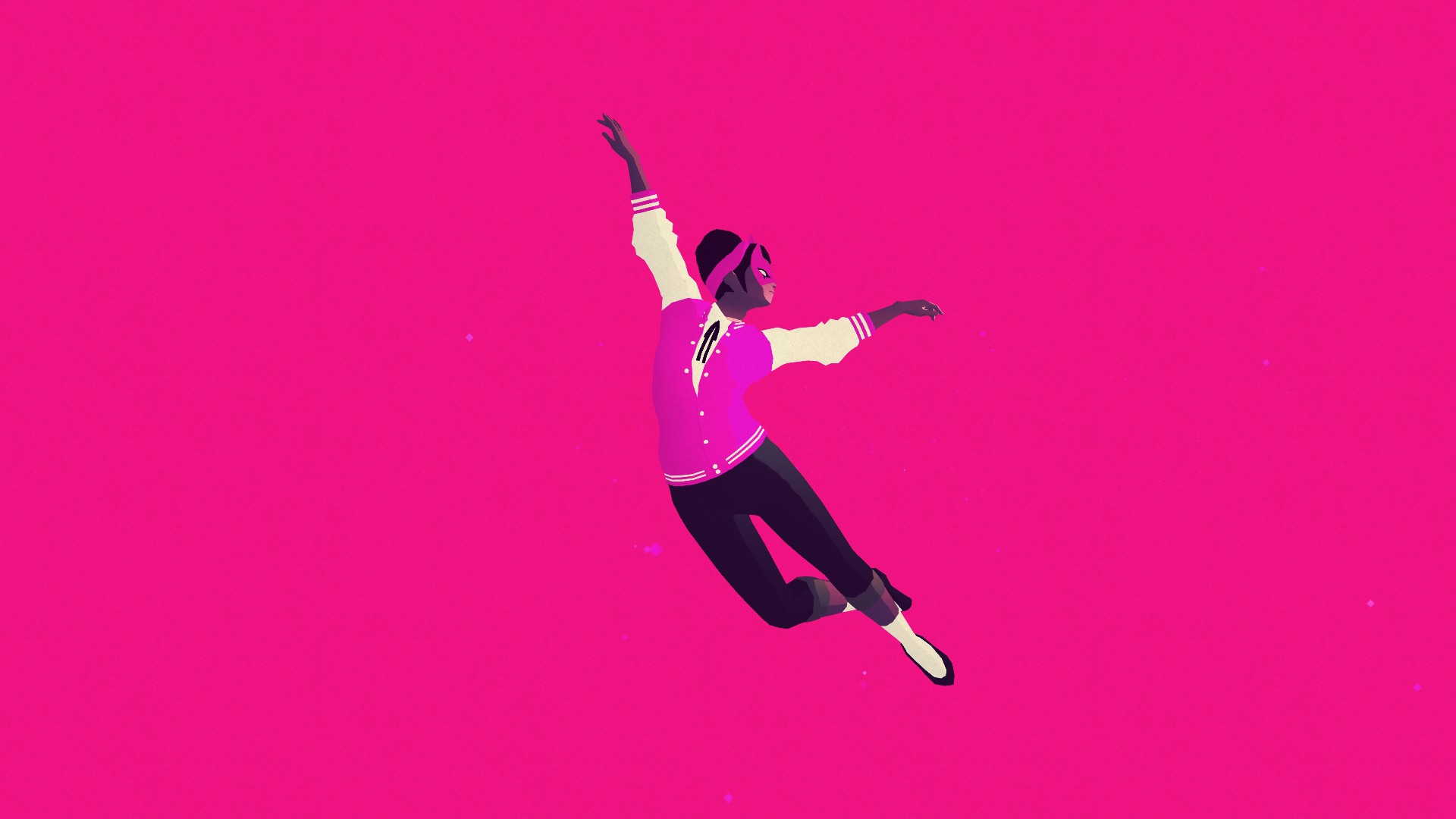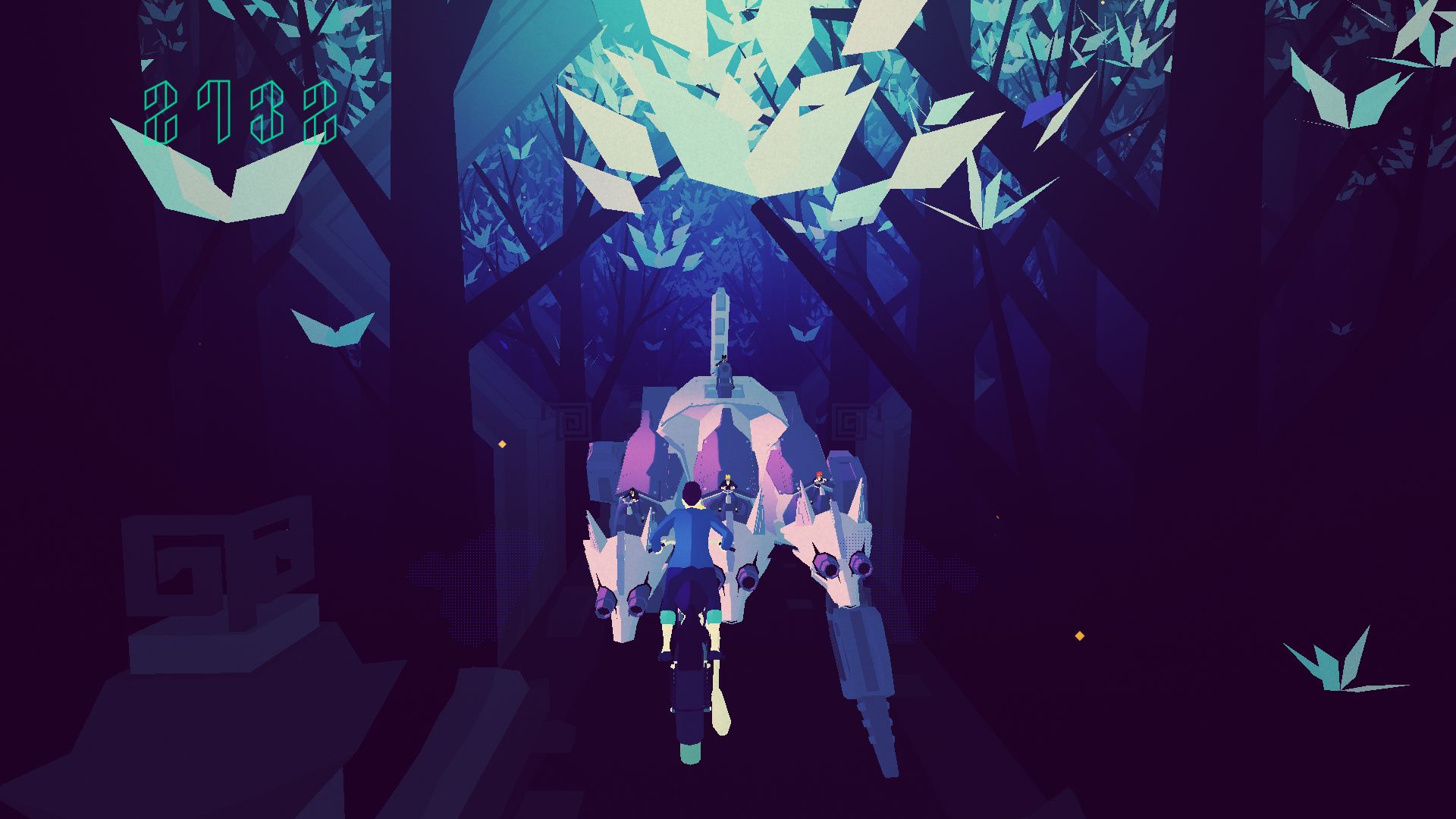When I spoke to Daniel Olsén, one of the soundtrack’s composers, he shared that Swedish developer Simogo didn’t intentionally give Sayonara Wild Hearts such a distinct queer vibe. Instead, they were motivated to make a game that’s just more inclusive. “I think it’s just something that happened, that a lot of queer people like this game,” said Olsén. “Probably they follow Taylor Swift and Carly Rae Jepsen, and that was clearly a large inspiration for us. There was not a original intent to make a game for a queer audience, but we wanted to include everyone.” In fact, the game’s synth pop styling was only decided upon when Simon Flesser, one half of Simogo, was listening to some pop music after a year of experimenting with other music genres. And given that videogames are so male-dominated, from their protagonists to even their music, the soundtrack’s strongly feminine influences felt like a better direction. “What we do is, usually when we work together, is that we create a playlist on Spotify as inspiration, then we just add songs we think fit thematically. So we ended up with this long playlist of pop songs,” Olsén explained. “And since most videogames today are just… very men dominated, we wanted to have this game be an all-female cast. And we also wanted our singer to be female, too.” The inclusion of vocalist Linnea Olssen, whose panoramic pipes would infuse these jams with a saccharine-sweet and futuristic quality, is the soundtrack’s finishing touch.
These decisions behind the music work to amplify the game’s positive messages about queerness and femininity, which are already baked into the game. Playing a queer woman whose heart ached so much it altered the fabric of time and space, the game is essentially about the underexplored memoir of recovery - a rare balm for the queer community, whose stories in fiction are often so defined by tragedy and death. Then there are the distinctly feminine motifs, like its lavish use of magical girl transformations that bring to mind strongly feminist anime like Revolutionary Girl Utena and Sailor Moon, which are then weaved in with the swoon-worthy, devil-may-care attitude of its girl gangs. Sayonara Wild Hearts is one of the rare stories where queer women aren’t depicted as hapless or inevitably doomed characters who deserve to be sympathised with and rescued; instead, they are the heroines others strive to be or wish to emulate. Toss in an off-the-cuff comment to publisher Annapurna Interactive about wanting actress and rapper Queen Latifah to be the game’s narrator, and the ingredients for a fiercely feminine and queer-friendlly Sayonara Wild Hearts were gathered. According to Olsén, nailing the atmosphere of the game involved close collaboration between Simogo and the musicians. Since every song is crafted differently, there wasn’t a fixed formula to follow when composing the soundtrack or the game’s levels. “Sometimes I would be given a level and then I would have to write something that fit,” said Olsén. “Usually I would just write a lot of short ideas, like 30 seconds to 2 minutes ideas, and then Simon would just listen to these and maybe one of them would sprout some ideas for our level.” Then it was back to writing, where Olsén would work on turning these snippets into full-fledged compositions, often with feedback about the game’s levels from Flesser. “He would come back to me and be like, ‘Okay add 30 seconds in, they are going to do this thing so can you maybe change the music here, like make a drop,’ or ‘Can you add something?’ It’s a lot of back and forth like that, to get the music and the levels to be very intertwined with each other.”
The soundtrack of Sayonara Wild Hearts is also presented like a concept album, with the songs fronted in-game by preposterously dapper all-girl gangs. Take for instance the VR-themed levels, in which the heroine comes face-to-face with a lone renegade called Hermit 64, who swiftly transports her to a virtual dreamscape. To capture the digital aesthetic of those levels, the music prominently featured ping-pong electronic beeps that cascade over shimmering synth melodies. Then there are the songs which characterise the Howling Moons, the leather-clad girl gang who ride on a mechanical, three-headed wolf, accompanied by a pack of wolves galloping through an enchanted forest. Olsén elaborated that their songs contain a lot of “glittery” sound effects, in order to reflect a mystical atmosphere around their stages. So while every stage is incredibly distinctive, what ties all of them is the unifying idea that all these songs should be uplifting and catchy. “Only exception would be the ‘Heartbreak’ levels", said Olsén. “They’re supposed to be about heartbreak, so they’re a little darker in themes, and more monotone, to create a contrast with the pop songs.” Many members of the queer community have fallen in love with the game, embracing it by showering accolades (“Sayonara Wild Hearts is just a lesbian version of Sonic: The Hedgehog” goes one example) and creating a multitude of fanart based on the game. “Seriously, I played it yesterday and it was an intensely queer experience. It’s like a big gay acid trip with female bikers and clear inspiration from Utena and Sailor Moon. It’s basically all pink and purple to electro pop and even if it didn’t get gay (it does) the whole aesthetics with mechs and women in bow ties is aggressively gay,” said user CrankyCrow from the subreddit r/actuallesbians. Others, like RamonaMaybe from the subreddit r/gaymers, wrote that they “read the game as a trans narrative”, with the somewhat masculine-presenting protagonist, as well as the game’s predominantly blue and pink color scheme - the very colors that represent the transgender flag.
“I think the genre of music, coupled with the game’s visual aesthetic, give off this huge bi energy. Anyone can enjoy it but I feel the people that gravitated to the game most are under the queer umbrella in some way,” Elizabeth Henges, a freelance writer who identifies as pansexual, tells me. “What’s so great about Sayonara Wild Hearts is, as supernatural as it is, [that] it’s a simple story about heartbreak and learning to heal and move on. Sure there’s like crazy ass battles and chases going on, but it’s all about learning to love again, and with the game releasing so close to a painful breakup for me, that really meant a lot.” Sayonara Wild Hearts is a game, but it’s equally a pop album filled with undeniable earworms, its music ebbing and flowing between pensive melancholy one moment and inexplicable joy in the next. Its composers’ melodic sensibilities are undoubtly top-notch, but when intertwined with powerfully feminine artists and voices, it makes the entire experience feel exceptionally empowering for its female and queer fanbase. With a soundscape that’s utterly inextricable from the experience of playing, Sayonara Wild Heart is the kryptonite to exhausting and sometimes heartbreaking tropes around overcoming queer adversity - it’s about healing, recovery, and sheer exuberance.


